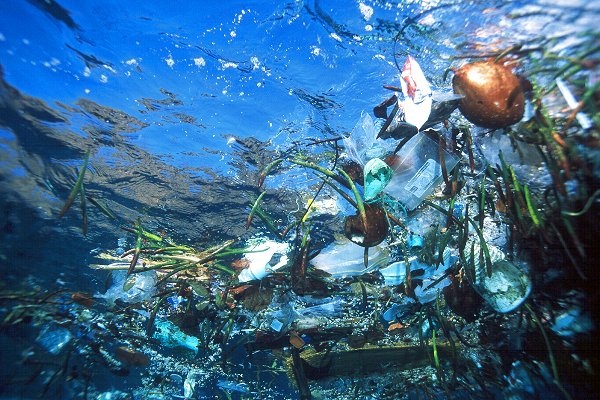What Happens to Plastic When It Ends Up Underwater?

Plastic pollution is a pressing environmental issue that affects our oceans and marine life. Millions of tons of plastic waste find their way into the ocean each year, with significant consequences for the ecosystem. In this blog post, we will explore what happens to plastic when it goes underwater and the impact it has on our marine environments.
- Buoyancy and Floating Plastics: Plastics, particularly those made of low-density materials like polyethylene and polypropylene, have a tendency to float on the surface of the water. When plastic waste is discarded or improperly managed, it can easily be carried by wind and water currents and eventually end up in rivers, lakes, or the ocean. Floating plastics pose a range of issues, including entanglement of marine animals and the creation of “garbage patches” in ocean gyres.
- Submergence and Sinking: While some plastics remain on the surface, others become waterlogged due to prolonged exposure to the elements. Over time, the plastic materials may absorb water and become denser, causing them to sink beneath the surface. Once submerged, plastic waste can undergo various processes, each with distinct implications.
a. Degradation and Fragmentation: Submerged plastics are subject to biodegradation and photodegradation processes. Exposure to sunlight, heat, and microbial activity can break down plastic into smaller fragments. This process, known as fragmentation, leads to the production of microplastics, which are less than 5mm in size. Microplastics can persist in the environment for hundreds of years and are a significant concern due to their ability to be ingested by marine organisms.
b. Transport and Distribution: Submerged plastics can be transported by ocean currents, resulting in their widespread distribution across different marine environments. Plastics can travel vast distances, from coastal areas to remote regions, impacting diverse ecosystems along the way. Marine creatures that reside in the water column or near the seafloor are at risk of encountering and interacting with these submerged plastics.
c. Settling on the Seafloor: Heavier plastic items or fragments may ultimately settle on the seafloor, where they can persist for extended periods. These plastics can disrupt benthic ecosystems, affecting organisms that dwell on or near the seafloor. Marine species may mistake the plastic debris for food or habitat, leading to ingestion and entanglement risks.
- Long-Term Consequences: The presence of underwater plastics has severe consequences for marine life and ecosystems. Animals can mistake plastic fragments for prey, leading to internal injuries, blockages, and malnutrition. Additionally, the toxic chemicals present in plastics can leach into the surrounding water, further impacting marine organisms and potentially entering the food chain.
- Mitigation and Solutions: Addressing underwater plastic pollution requires a multi-faceted approach involving global cooperation, policy changes, waste management improvements, and public awareness. Efforts such as reducing plastic consumption, promoting recycling and sustainable packaging, and implementing effective waste management systems are crucial in combating the issue.
Plastic waste that ends up underwater undergoes various processes, including degradation, transport, and settling. These processes have detrimental effects on marine ecosystems, leading to the entanglement, ingestion, and disruption of marine organisms. To protect our oceans, it is essential to reduce plastic waste at its source, improve waste management practices, and foster a global commitment to a more sustainable future. By taking action today, we can make a positive impact on the health and well-being of our marine environments.
Picture Courtesy: Google/images are subject to copyright








